💊 Pantoprazole 40mg Tablet – Targeted Acid Relief. Long-Lasting Protection.
🔬 What is Pantoprazole 40mg?
Pantoprazole 40mg is a proton pump inhibitor (PPI) that reduces the production of stomach acid. It works by irreversibly blocking the H⁺/K⁺-ATPase enzyme (gastric proton pump) in the stomach lining, which is responsible for secreting hydrochloric acid.
This action makes it highly effective for treating acid-related gastrointestinal conditions, promoting healing of the digestive tract and providing long-term relief.
✅ Uses / Indications
Pantoprazole 40mg is prescribed for the treatment and management of:
-
Gastroesophageal reflux disease (GERD)
-
Erosive esophagitis
-
Peptic ulcers (gastric and duodenal)
-
Zollinger-Ellison syndrome (acid hypersecretion)
-
NSAID-induced ulcers
-
Helicobacter pylori-associated ulcer treatment (in combination with antibiotics)
-
Heartburn and acid indigestion (short-term use)
It is often used as a maintenance therapy in chronic reflux or ulcer-prone patients.
🧪 Composition / Ingredients
Each enteric-coated tablet contains:
-
Pantoprazole sodium sesquihydrate equivalent to 40mg of Pantoprazole
-
Excipients may include:
-
Mannitol
-
Crospovidone
-
Sodium carbonate
-
Magnesium stearate
-
Hypromellose
-
Titanium dioxide
-
Methacrylic acid copolymer (for enteric coating)
-
The enteric coating ensures the drug bypasses stomach acid and dissolves in the small intestine for optimal effect.
⚠️ Precautions and Warnings
-
Liver dysfunction: Use with caution in patients with impaired liver function.
-
Long-term use risks: May lead to vitamin B12 deficiency, magnesium deficiency, or osteoporosis-related fractures.
-
Infection risk: Chronic acid suppression may increase risk of Clostridium difficile infection or pneumonia.
-
Pregnancy and lactation: Considered safe in pregnancy (Category B), but consult a physician.
-
Children: Use only in children when prescribed for specific conditions.
Do not crush or chew the tablet — it must remain intact for the enteric coating to function.
💥 Side Effects
Common:
-
Headache
-
Diarrhea or constipation
-
Nausea
-
Flatulence
-
Abdominal pain
Less Common but Serious:
-
Low magnesium levels (muscle cramps, palpitations)
-
Severe allergic reactions (rash, swelling, difficulty breathing)
-
Liver enzyme changes
-
Bone fractures (with prolonged high-dose use)
Report any unusual fatigue, muscle weakness, or seizures to your doctor.
📋 Dosage and Administration
-
Typical dose: One tablet (40mg) once daily, usually 30–60 minutes before breakfast.
-
Duration of therapy depends on the condition:
-
GERD: 4 to 8 weeks
-
Ulcers: 4 to 8 weeks
-
Maintenance: Long-term as directed
-
-
May be combined with antibiotics for H. pylori eradication.
Do not stop abruptly if taken long-term; taper as per doctor’s advice to avoid acid rebound.
🔄 Drug Interactions
Pantoprazole may interact with:
-
Clopidogrel – may reduce its antiplatelet effect
-
Warfarin – monitor INR levels
-
Methotrexate – levels may increase, especially in high doses
-
HIV medications – may alter absorption (atazanavir, rilpivirine)
Avoid taking with antacids at the same time; space them at least 1 hour apart.
📌 Conclusion
Pantoprazole 40mg offers potent, lasting relief from acid-related conditions like GERD, ulcers, and reflux. It’s well-tolerated and ideal for both acute symptom relief and long-term management. Like all PPIs, it should be used under medical supervision to avoid nutrient deficiencies and potential complications.
Note: This information is intended for educational purposes and should not replace professional medical advice. Always consult a healthcare provider for personalized guidance.
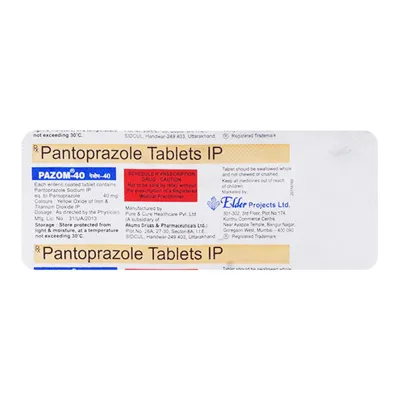
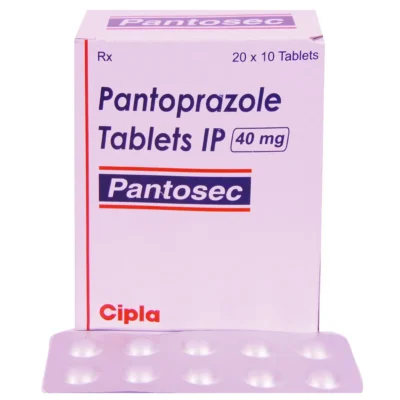
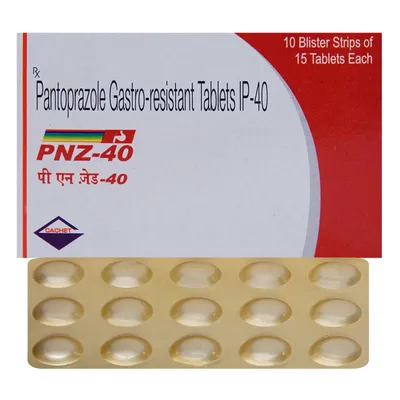
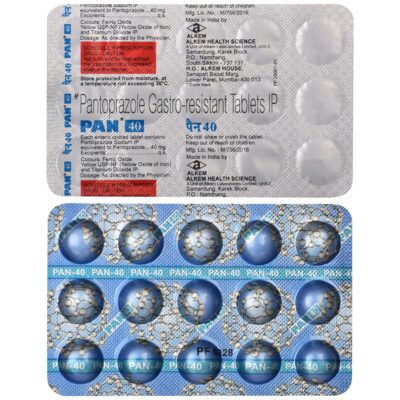
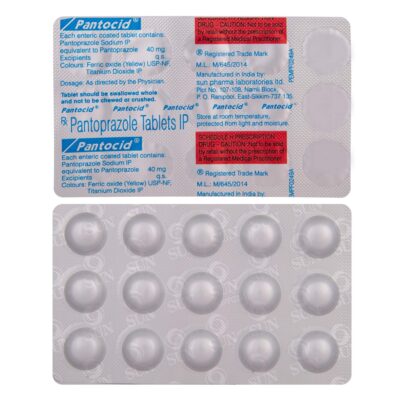
Reviews
There are no reviews yet.